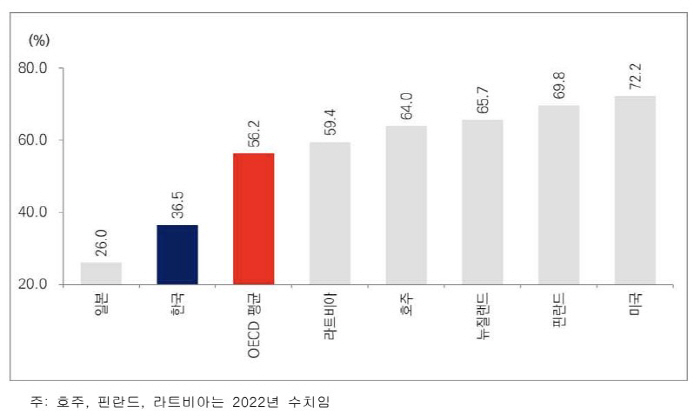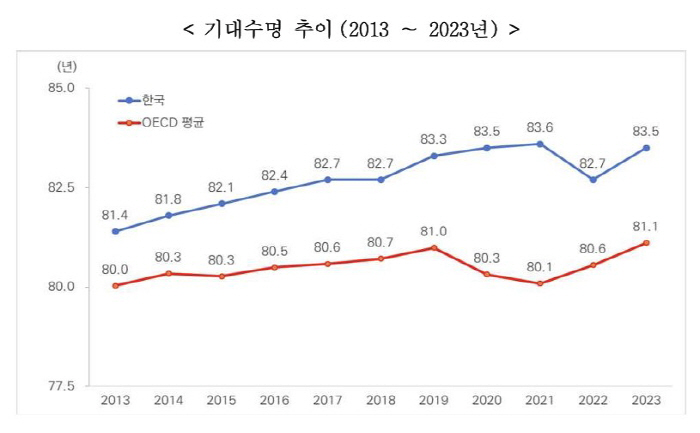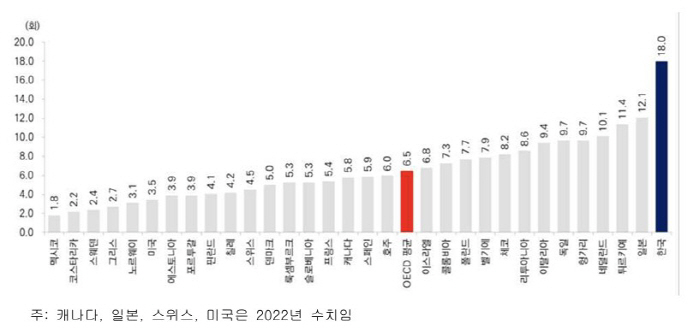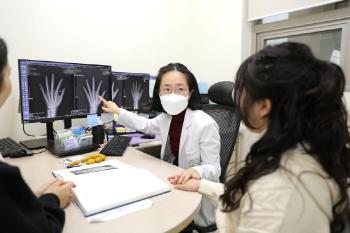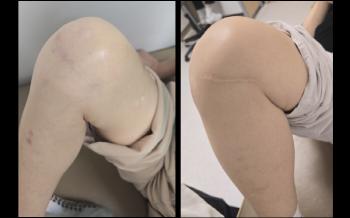The second slimmest of OECD countries...The proportion of overweight and obese people in Korea has increased by 5 percentage points in 10 years
|
This is the result of the Ministry of Health and Welfare's analysis of the details of major fields and indicators of the OECD's recent announcement of 「OECD Health Statistics 2025」.
According to the Ministry of Health and Welfare's announcement, 36.5% of the population aged 15 or older in Korea were overweight and obese based on height and weight measurement, the second lowest after Japan (26.0%). However, the proportion of overweight and obese people with BMI (body mass index = body weight (kg)/height (㎡)) 25 or more showed a gradually increasing trend to 31.5% in 2013, 34.3% in 2018, and 36.5% in 2023.
|
Although the avoidable mortality rate (the mortality rate that can be prevented by preventive activities of the disease and the provision of timely treatment services) has been decreasing over the past decade to 206.0 in 2012, 159.0 in 2017 and 151.0 in 2022, significantly lower than in OECD countries (average 228.6).
As of 2022, Korea's suicide mortality rate is 23.2 per 100,000 people, the highest among OECD countries, but it is significantly lower than the 30.3 in 2012, showing a long-term decline. In addition, the infant mortality rate in Korea in 2023 was 2.5 per 1,000 births, 1.6 lower than the OECD average (4.1).
The smoking rate (15.3%) and annual alcohol consumption (7.8 liters) of the population aged 15 or older in Korea were estimated to be at the OECD average (13.2% smoking rate and 8.6 liters alcohol consumption).
The annual smoking rate was 19.9% in 2013, 17.5% in 2018, and 15.3% in 2023, showing a decreasing trend over the past decade. Liquor consumption is also on the decline to 8.7 liters in 2013, 8.5 liters in 2018, and 7.8 liters in 2023.
The number of health care personnel was the second lowest among OECD countries (2.7 per 1,000 population, including oriental doctors), and the number of clinical nursing personnel (9.5 per 1,000 population) was lower than the OECD average (9.7 per 1,000 population).
The number of medical equipment, such as magnetic resonance imaging (MRI) (38.7 units per 1 million people) and computed tomography (CT) (45.3 units per 1 million people), is higher than the OECD average (21.2 MRIs and 31.1 CTs), and the number of hospital beds (12.6 units per 1,000 people) is about 3.0 times the OECD average (4.2).
In addition, the amount of CT and MRI use in Korea has been continuously increasing over the past 10 years. CT usage increased by 8.3% per annum, and MRI usage increased by 13.2% per annum.
|
In addition, the influenza vaccination rate of the population aged 65 or older in Korea in 2023 was the highest among OECD countries at 84.8%, which is about 1.6 times higher than the average of member countries (51.8%).
Current medical expenses are 8.5% of gross domestic product (GDP), slightly lower than the OECD average (9.1%), but they have been increasing rapidly over the past decade. In addition, drug sales per capita are 968.9 US$ PPP (Purchasing Power Parity, reflecting each country's price level), higher than the OECD average (658.1 US$ PPP). By country, Belgium (1,057.1 US$ PPP) and Germany (971.8 US$ PPP) sold more drugs per capita than Korea.
The proportion of long-term care recipients (9.0% at home and 2.7% at facilities) among the elderly aged 65 or older is lower than the OECD average (11.2% at home and 3.5% at facilities), but it has been increasing rapidly over the past decade due to the increase of the elderly population, the increase in the desire to use long-term care services for the elderly, and the expansion of coverage.
Meanwhile, as of 2023, the number of official long-term care workers in Korea was 5.3 per 100 people aged 65 or older, 0.2 less than the OECD average (5.5). Norway (13.0) and Sweden (12.0) were the countries with the largest number of long-term care workers.
This article was translated by Naver AI translator.
